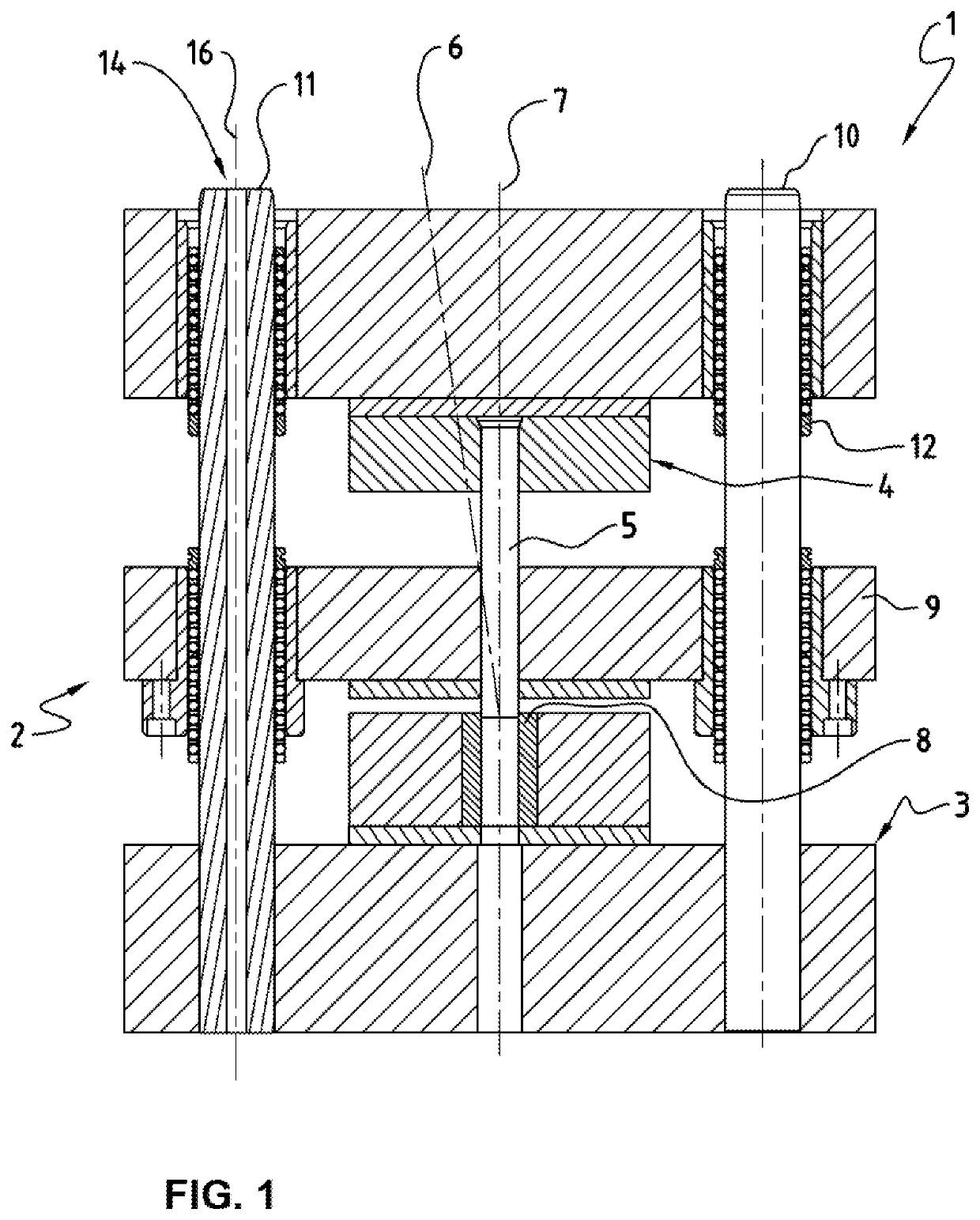System for monitoring standard parts
a technology for standard parts and monitoring systems, applied in the direction of shaping tools, programme control, instruments, etc., can solve the problems of stress and deflection of guide pillars, deviation from congruence, etc., and achieve high acceleration and speed, high stroke frequency of forming or pressing tools, and high accuracy
- Summary
- Abstract
- Description
- Claims
- Application Information
AI Technical Summary
Benefits of technology
Problems solved by technology
Method used
Image
Examples
first embodiment
[0048]FIG. 2 shows a perspective view of a longitudinal section through a measurement means 20 according to the invention. The measuring means 20 comprises a pillar shaped structure 22 on which a surface sensing element in form of a strain gauge 24 is attached, forming a strain gauge sensor. The measuring means 20 is configured to be inserted into the longitudinal bore 14 of the guide pillar 10 and to be fixedly mounted to the end regions of the guide pillar 10 by holding elements. Therefore, at end regions of the pillar shaped structure 22 ring shaped elements 26 can be provided, which come to abut against the end faces 11 of the guide pillar 10 when the pillar shaped structure 22 is fully pushed into the longitudinal bore 14 and can be fixedly mounted in position e.g. by press fitting.
[0049]At a circumference of the pillar shaped structure 22 at least one strain gauge 24 is provided. Preferably, two strain gauges 24 are attached in pairs on opposite sides of the pillar shaped stru...
third embodiment
[0051]FIGS. 4a and 4b shows a measurement means 20 according to the invention. The FIGS. 4a and 4b show schematically a guide pillar 10 in which a fiber optic sensor 40 is embedded in the longitudinal bore 14 coaxially with the guide pillar axis 16. The optical sensor 40 is configured as a fiber optic sensor, in particular as an interferometric sensor comprising a process unit 42 comprising inter alia an interferometer such as a Fabry-Pérot-Interferometer, a transducer to convert an optical signal into an electrical signal and a processor. For example light from a low-coherence source (not shown) is divided into a measurement fiber 44 and a reference fiber 46 arranged inside of the measuring means 20. The measurement fiber 44 is connected to the measuring means 20 such that during bending the measurement fiber 44 is elongated. FIG. 4a shows the guide pillar 10 in a straight position. FIG. 4b shows the guide pillar 10 subjected to deflection that can be detected by the fiber optic se...
PUM
| Property | Measurement | Unit |
|---|---|---|
| diameter | aaaaa | aaaaa |
| distance | aaaaa | aaaaa |
| temperature | aaaaa | aaaaa |
Abstract
Description
Claims
Application Information
 Login to View More
Login to View More - R&D
- Intellectual Property
- Life Sciences
- Materials
- Tech Scout
- Unparalleled Data Quality
- Higher Quality Content
- 60% Fewer Hallucinations
Browse by: Latest US Patents, China's latest patents, Technical Efficacy Thesaurus, Application Domain, Technology Topic, Popular Technical Reports.
© 2025 PatSnap. All rights reserved.Legal|Privacy policy|Modern Slavery Act Transparency Statement|Sitemap|About US| Contact US: help@patsnap.com



